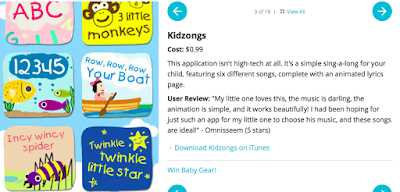 |
| Journal of Pediatrics Guides Parents & Grands |
The latest journal of Pediatrics October 2016 (aappublications.org), has released new recommendations for technology use by children. The report “Media and Young Minds” relates how technology can be managed in the home (healthychildren.org/Media Use Plan), the number of suggested hours of screen time, and helpful hints for parental guidance.
Positive Technology
The report mentions some positive aspects and uses.
 |
| Many Positives |
Pediatricians still maintain that children younger than 18 to 24 months, a time of rapid brain development, should not have screen time. However, it is healthy, for families to get together with online resources like Facebook and Skype to chat with relatives and friends. Technology allows far flung families to see each other, communicate, and nurture connections.
 |
| Children Should Interact With Apps |
If parents want to introduce some shows or apps they should watch with the children and be very selective. Even infants exposed to screen media blue light while in the lap show significantly shorter night-time sleep duration than those with no evening screen exposure. Reading e-Books is different from reading a traditional book with illustrations on an adult’s lap.
This age is better off on the floor actively playing and talking with family. “Because of their immature symbolic memory and attentional skills, infants and toddlers cannot learn from traditional digital media as they do from interactions with caregivers, and they have difficulty transferring that knowledge to their 3-dimensional experience. The chief factor that facilitates toddlers’ learning from commercial media (starting around 15 months of age) is parents watching with them and reteaching the content,” according to the report. Authors include Dr. Jenny Radesky from the University of Michigan and Dr. Megan Moreno from the Seattle Children’s Hospital.
 |
| Age Appropriate Guidelines |
The guidelines recommend children ages 2-5 have a one- hour limit of screen time. They again recommend that families watch with the children, talk about what is being seen, and carefully select shows from PBS Kids and the Sesame Street Workshop. Children need to be active, talking, and reading with adults. There is no substitute for human interaction and relationship for developing a healthy brain and the rest of the body.
 |
| Singing With the App |
According to the new report, children flourish during unstructured time. They need to get outside discovering things in 3- D rather than on a two dimensional screen, crucial for development.
Doable Reasonable Guidelines
Pediatricians continue to urge families to include one hour of physical activity, 8-12 hours of sleep, and unplugged family time like meals.
 |
| Use Reason and Good Judgement with Media |
- Ban screen time one hour before bedtime since noise and light can disrupt sleep.
- Discourage use of entertainment media during homework time since multitasking interferes with learning. Monitored educational sites can help with homework learning.
- Continue to monitor what kids watch and do on–line. Discuss on-line bullying, sexting, and other hazards with older children.
Websites Best Apps for Kids & Parents Magazine sites:
For more go to - grandparentsteachtoo.blogspot.com and wnmufm.org/Learning Through the Seasons live Tuesdays at 4:30pm and Saturdays at 8:30 am and pod casts archived on the site.














